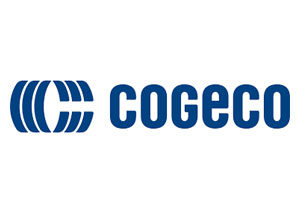 Corus Entertainment’s Q4 and 2020 year end results reveal that Corus Radio segment revenues dipped 43% in the fourth quarter and 28% for the year, while segment profit fell $5.7 million (83%) in Q4 and $18.6 million (54%) for the year, as discretionary ad spending dried up. On the Television side, ad losses were mitigated by demand for content from U.S. broadcasters and streaming services, with segment revenues down 13% in Q4 and 9% for the year. TV advertising revenues decreased 25% in the quarter and 15% for the year, while subscriber revenues dipped by 1% for both the quarter and year. Corus noted that the same production disruption that buoyed demand for its television content, also led to lower programming costs for its own channels with fewer new episodes and more repeats. However, the company said COVID-19 is expected to increase production costs in the immediate future. Read more here.
Corus Entertainment’s Q4 and 2020 year end results reveal that Corus Radio segment revenues dipped 43% in the fourth quarter and 28% for the year, while segment profit fell $5.7 million (83%) in Q4 and $18.6 million (54%) for the year, as discretionary ad spending dried up. On the Television side, ad losses were mitigated by demand for content from U.S. broadcasters and streaming services, with segment revenues down 13% in Q4 and 9% for the year. TV advertising revenues decreased 25% in the quarter and 15% for the year, while subscriber revenues dipped by 1% for both the quarter and year. Corus noted that the same production disruption that buoyed demand for its television content, also led to lower programming costs for its own channels with fewer new episodes and more repeats. However, the company said COVID-19 is expected to increase production costs in the immediate future. Read more here.
 Rogers Q3 results for the three months ended Sept. 30, saw total revenue decrease by 2%, driven by a 9% decrease in Wireless service revenue, which was mainly a result of lower roaming revenue due to global travel restrictions during COVID-19, and lower overage revenue, as a result of the continued adoption of Rogers Infinite unlimited data plans. Cable revenue decreased by 1%, while Media revenue increased by 1%, primarily as a result of higher revenue from the resumption of NHL hockey, offset by lower revenue at the Toronto Blue Jays due to COVID-19. Consolidated adjusted EBITDA decreased 4% in the quarter. Media adjusted EBITDA decreased by 32%, or $41 million, primarily due to higher programming and sports costs associated with the resumption of NHL hockey, partially offset by higher revenue.
Rogers Q3 results for the three months ended Sept. 30, saw total revenue decrease by 2%, driven by a 9% decrease in Wireless service revenue, which was mainly a result of lower roaming revenue due to global travel restrictions during COVID-19, and lower overage revenue, as a result of the continued adoption of Rogers Infinite unlimited data plans. Cable revenue decreased by 1%, while Media revenue increased by 1%, primarily as a result of higher revenue from the resumption of NHL hockey, offset by lower revenue at the Toronto Blue Jays due to COVID-19. Consolidated adjusted EBITDA decreased 4% in the quarter. Media adjusted EBITDA decreased by 32%, or $41 million, primarily due to higher programming and sports costs associated with the resumption of NHL hockey, partially offset by higher revenue.
 Cogeco says the fourth quarter results of its media business was negatively impacted by the COVID-19 pandemic as the lower level of economic activity, notably in the retail industry, had an adverse impact on advertising revenues. However, the quarterly revenue decline compared to last year was slightly less than experienced during the third quarter. It says it’s also encouraged by advanced bookings for the new fiscal year for certain advertising verticals and in non-urban areas. Revenue increased by 2.2% to reach $624.2 million. On a constant currency basis, revenue increased by 1.6%, due to an increase of 3.0% in constant currency in the Communications segment mostly as a result of the American broadband services operations’ organic growth, combined with the impact of the Thames Valley Communications acquisition completed on March 10. Adjusted EBITDA increased by 6.7% to reach $299.9 million mostly attributable to higher adjusted EBITDA in the Communications segment due to increases in both the American and Canadian broadband services operations, partly offset by a decrease in media activities.
Cogeco says the fourth quarter results of its media business was negatively impacted by the COVID-19 pandemic as the lower level of economic activity, notably in the retail industry, had an adverse impact on advertising revenues. However, the quarterly revenue decline compared to last year was slightly less than experienced during the third quarter. It says it’s also encouraged by advanced bookings for the new fiscal year for certain advertising verticals and in non-urban areas. Revenue increased by 2.2% to reach $624.2 million. On a constant currency basis, revenue increased by 1.6%, due to an increase of 3.0% in constant currency in the Communications segment mostly as a result of the American broadband services operations’ organic growth, combined with the impact of the Thames Valley Communications acquisition completed on March 10. Adjusted EBITDA increased by 6.7% to reach $299.9 million mostly attributable to higher adjusted EBITDA in the Communications segment due to increases in both the American and Canadian broadband services operations, partly offset by a decrease in media activities.
 The CRTC has renewed Bell’s Fibe TV community television licences serving Ontario, Quebec and the Atlantic Provinces, while finding Bell misallocated nearly $36 million in local programming spending. In a lengthy decision, the commission cites Bell for trying to pass off shows like LetterKenny, Let’s Get At’er (a behind the scenes look at the Crave series’ Sudbury shooting locations), and Mary’s Big Kitchen Party (featuring Mary Berg of CTV’s Mary’s Kitchen Crush), as locally reflective. The commission says Bell was using funding from the local expression budgets of its small exempt BDUs in the Atlantic Provinces to fund expensive non-local productions that were based in either Toronto or Montréal. The CRTC says during the 2017-18 broadcast year alone, “Bell drew a significant amount of money from small exempt services in the Atlantic Provinces to finance the Montréal- and Toronto-based productions – all of which relate to Bell’s commercial programming.” Accordingly, Bell has been ordered to pay as a condition of licence nearly $18 million to the Canada Media Fund (CMF), corresponding to the excess portion of misallocated contributions to local expression. Read more here.
The CRTC has renewed Bell’s Fibe TV community television licences serving Ontario, Quebec and the Atlantic Provinces, while finding Bell misallocated nearly $36 million in local programming spending. In a lengthy decision, the commission cites Bell for trying to pass off shows like LetterKenny, Let’s Get At’er (a behind the scenes look at the Crave series’ Sudbury shooting locations), and Mary’s Big Kitchen Party (featuring Mary Berg of CTV’s Mary’s Kitchen Crush), as locally reflective. The commission says Bell was using funding from the local expression budgets of its small exempt BDUs in the Atlantic Provinces to fund expensive non-local productions that were based in either Toronto or Montréal. The CRTC says during the 2017-18 broadcast year alone, “Bell drew a significant amount of money from small exempt services in the Atlantic Provinces to finance the Montréal- and Toronto-based productions – all of which relate to Bell’s commercial programming.” Accordingly, Bell has been ordered to pay as a condition of licence nearly $18 million to the Canada Media Fund (CMF), corresponding to the excess portion of misallocated contributions to local expression. Read more here.
 CBC/Radio-Canada is taking aim at reports it’s being granted a $33.7 million federal COVID-19 bailout. The public broadcaster issued a press release Monday attempting to debunk recent stories published by Blacklock’s Reporter, the Post Millennial, Rebel Media, and True North, featuring headlines like “CBC-TV Gets A Covid Bailout” and “Trudeau Liberals give failing CBC-TV bailout in midst of pandemic.” While the reports maintain the Liberal government has crafted a pandemic bailout for CBC-TV to compensate for a dip in advertising revenue, the public broadcaster says it has received no additional funding from government and that the documents cited, and tabled in Parliament last week, reflect an internal transfer of funds from CBC/Radio-Canada’s current capital budget to its current operating budget. “As the [Supplementary] Estimates make clear, this is an ‘Internal reallocation of resources for the COVID-19 impact to advertising revenues and operating costs,’” CBC said in the statement. Read more here.
CBC/Radio-Canada is taking aim at reports it’s being granted a $33.7 million federal COVID-19 bailout. The public broadcaster issued a press release Monday attempting to debunk recent stories published by Blacklock’s Reporter, the Post Millennial, Rebel Media, and True North, featuring headlines like “CBC-TV Gets A Covid Bailout” and “Trudeau Liberals give failing CBC-TV bailout in midst of pandemic.” While the reports maintain the Liberal government has crafted a pandemic bailout for CBC-TV to compensate for a dip in advertising revenue, the public broadcaster says it has received no additional funding from government and that the documents cited, and tabled in Parliament last week, reflect an internal transfer of funds from CBC/Radio-Canada’s current capital budget to its current operating budget. “As the [Supplementary] Estimates make clear, this is an ‘Internal reallocation of resources for the COVID-19 impact to advertising revenues and operating costs,’” CBC said in the statement. Read more here.
LISTEN: With Canada’s 15th annual Media Literacy Week underway, Matthew Johnson, Education Director at MediaSmarts, Canada’s Centre for Digital and Media Literacy, joins Broadcast Dialogue – The Podcast to share his thoughts on how to help rebuild trust in legitimate news sources. Listen on your favourite podcast app or here:

CBC and CTV News are among 24 media organizations that have signed a statement urging the U.S. government not to move forward with proposed changes that would shorten the visa length for foreign journalists. The “I visa” is required for all foreign journalists operating in the U.S. Valid right now for up to five years, the Department of Homeland Security is proposing to limit the visa to 240 days, with a possible extension of a maximum of 240 days. News organizations say the move would seriously impact the work of the foreign media covering the U.S. “Furthermore, the proposal is unclear about how the decision about a possible extension would be reached and what would happen after the extension period has elapsed,” says the statement. “Many foreign news organizations have a permanent presence in the US by sending correspondents there for a number of years (commonly 2-5 years). This period of time allows the individual journalists to better understand the country and therefore better report on it to the rest of the world.”
 The Canadian Ethnic Media Association (CEMA) presents its 42nd Annual Awards for Journalistic Excellence on Nov. 18. The virtual event will get underway on CEMA’s Facebook page and YouTube channel, at 8 p.m. ET, and will feature at-home acceptance speeches, remote artistic performances, and messages from special guests. A new CEMA logo will also be unveiled.
The Canadian Ethnic Media Association (CEMA) presents its 42nd Annual Awards for Journalistic Excellence on Nov. 18. The virtual event will get underway on CEMA’s Facebook page and YouTube channel, at 8 p.m. ET, and will feature at-home acceptance speeches, remote artistic performances, and messages from special guests. A new CEMA logo will also be unveiled.
 The Jack Webster Foundation, recognizing excellence in journalism in B.C., has announced its 2020 Student/Indigenous Student Journalism Award recipients. Each recipient will be awarded $2,000. Read more about the Indigenous Student Journalism Award recipients here, and the Student Journalism Award recipients here.
The Jack Webster Foundation, recognizing excellence in journalism in B.C., has announced its 2020 Student/Indigenous Student Journalism Award recipients. Each recipient will be awarded $2,000. Read more about the Indigenous Student Journalism Award recipients here, and the Student Journalism Award recipients here.
 The Canadian Journalism Foundation’s (CJF) next J-Talks Live virtual event explores what it will take for journalism to survive in this new reality. The free webcast takes place Thursday, Oct. 29 at 1 p.m. ET. The featured guests are S. Mitra Kalita, senior vice-president for news, opinion and programming for CNN Digital, and Rasmus Kleis Nielsen, director of the Reuters Institute for the Study of Journalism at the University of Oxford. They’ll be in conversation with host Anna Maria Tremonti.
The Canadian Journalism Foundation’s (CJF) next J-Talks Live virtual event explores what it will take for journalism to survive in this new reality. The free webcast takes place Thursday, Oct. 29 at 1 p.m. ET. The featured guests are S. Mitra Kalita, senior vice-president for news, opinion and programming for CNN Digital, and Rasmus Kleis Nielsen, director of the Reuters Institute for the Study of Journalism at the University of Oxford. They’ll be in conversation with host Anna Maria Tremonti.




